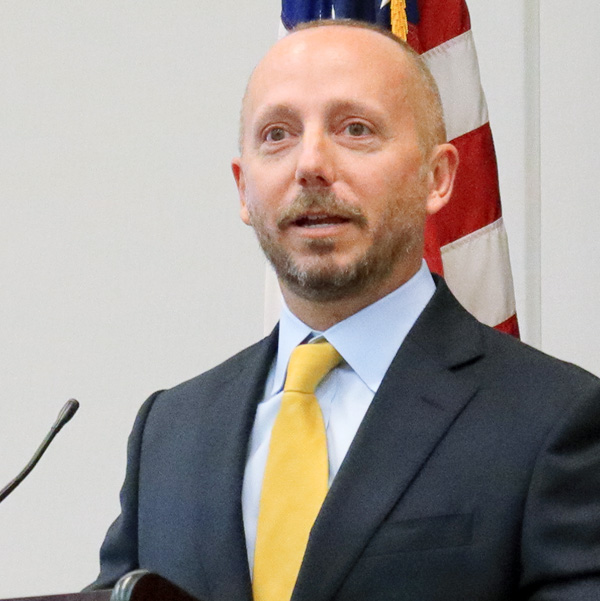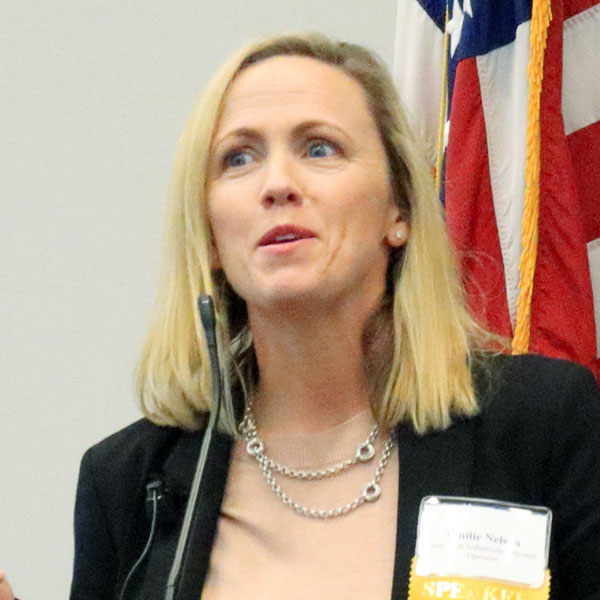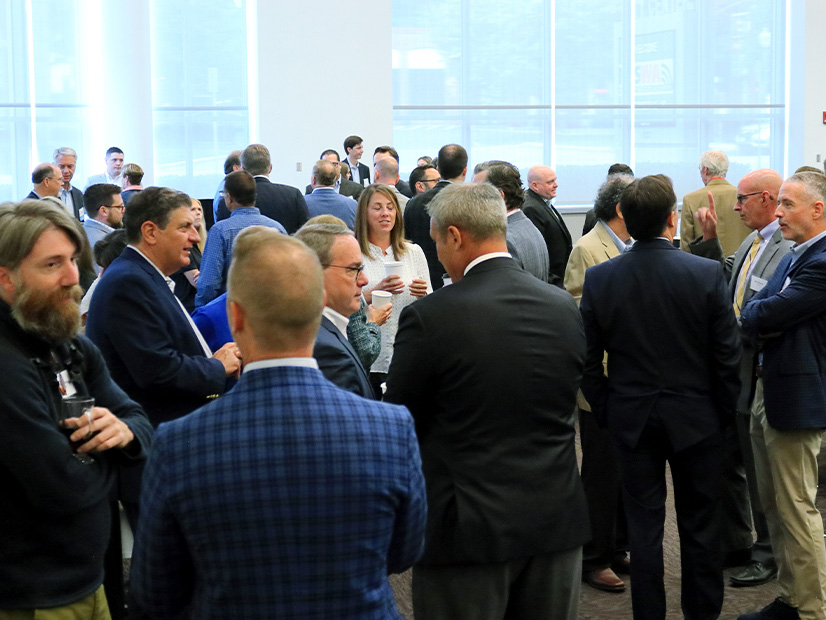SARATOGA SPRINGS, N.Y. — Three years after New York passed some of the strongest climate protection legislation in the nation, the technology to reach its goals and the plan to roll it out are still works in progress. And that has the head of the Independent Power Producers of New York (IPPNY) more than a little concerned.
The draft scoping plan of New York’s Climate Leadership and Community Protection Act (CLCPA) contains many unanswered questions on affordability, reliability and zero-emission technologies, IPPNY CEO Gavin Donohue said at the group’s Fall Conference on Wednesday.
“If we’re not going to use natural gas to keep the lights on, what is it going to be? There is no consensus on what qualifies as zero-emissions resources,” Donohue said in his opening remarks to the conference. “I am concerned about reliability. I don’t think the plan takes in reliability enough.”
The future of natural gas-fired generation — and what new technologies could replace its role in balancing intermittent renewable sources — dominated the discussions at the conference, which attracted more than 125 industry stakeholders to the Saratoga Springs City Center.
Seeking State’s Guidance
“It’s scary,” Donohue said, citing California’s pleading with residents to curtail power usage during its August heat wave; the deadly 2021 winter storm in Texas; Europe’s energy squeeze as a result of its reduced nuclear capacity; and the Russian invasion of Ukraine. “We really have to learn from those examples.”
Donohue called on state officials to provide guidance on how to reach the CLCPA’s requirements: reducing the state’s greenhouse gas emissions by 40% below 1990 levels by 2030; increasing renewables’ share of the state’s generation mix to 70% by 2030; and reaching net-zero emissions from electric supply by 2040. Those goals must be reconciled with the reality that gas and oil made up 70% of NYISO’s capacity as recently as July, he said. “How do we just ignore the fact that we needed oil and gas to keep the lights on at that rate?” he asked.
 IPPNY CEO Gavin Donohue | © RTO Insider LLC
IPPNY CEO Gavin Donohue | © RTO Insider LLCLast month, the New York State Building & Construction Trades Council and state AFL-CIO, which represent energy infrastructure workers, joined IPPNY in issuing Seven Principles for reaching the state’s climate goals, saying current plans lack a full cost analysis and a plan for grid reliability.
It followed the groups’ August 2021 petition asking the Public Service Commission to create a competitive program to encourage private sector investment in at least 1 GW of zero-emissions energy systems that would be in commercial operation by 2030.
NYISO’s System & Resource Outlook concluded the state will need to add as much as 45 GW of dispatchable emission-free resources (DEFR) by 2040 to supply the reliability services now provided by fossil-fueled generation. (See NYISO 20-Year Forecast Highlights Generation, Tx Hurdles to Climate Goals.)
“Under the law, the Public Service Commission has to determine what” qualifies as zero-emission resources, Donohue said to the audience, which included Commissioners Diane Burman and David Valesky.
Although the commission has outlined policies to achieve the 70-by-30 target, it has not said how the state should achieve the 2040 zero-emission target or when it would consider establishing such policies. “The commission’s silence on these matters creates uncertainty in the electricity market and investment community.”
The petition cites as possible technologies hydrogen; nuclear; combined cycle and combustion turbines fueled by zero-emission biogas; and natural gas with carbon capture and sequestration.
The petition asked the commission to decide by July 1 the zero-emission energy systems likely to be technically capable by 2030. “Having these new technologies enter into service by 2030 will allow operational experience to accumulate and provide an opportunity for any needed technology refinements to assure that all necessary resource additions are operating in time to achieve the 2040 zero-emission target,” it said.
The commission has taken no action on the petition.
Reasons for Optimism
Department of Environmental Conservation Commissioner Basil Seggos, who spoke after Donohue, said the DEC is meeting monthly with the Department of Public Service and NYISO to address reliability concerns as the state prepares to finalize the CLCPA scoping plan. The plan, which Seggos said generated 35,000 public comments, is due to be finalized and submitted to the governor and legislative leaders in January. (See NY Officials Approve Draft Climate Action Plan.)
 N.Y. Department of Environmental Conservation Commissioner Basil Seggos | © RTO Insider LLC
N.Y. Department of Environmental Conservation Commissioner Basil Seggos | © RTO Insider LLC“We have to keep the lights on as we make this incredible transition, this really difficult transition, to the future,” Seggos said.
Seggos did not downplay the difficulty of the task at hand: “This will be the hardest thing that New York state ever does, and frankly, that the U.S. ever does: addressing the climate crisis and doing it in a way that benefits everybody.”
But he said he was optimistic, citing the nation’s response to World War II and the COVID-19 pandemic and the climate spending authorized by Congress under the Inflation Reduction Act. “What is $369 billion [multiplied to by] leveraging private dollars? It’s trillions, probably.
“We’ve got the technologies,” he said, qualifying that “we may not have all of them; they may not be at scale yet; but we have the makings of these technologies.”
Implementation Questions
IPPNY’s outside counsel, David Johnson of Read and Laniado, asked Seggos about the DEC Division of Air Resources’ DAR-21 policy implementing Section 7(2) of the CLCPA. The provision requires the state to determine if applications for Title V air pollution control permits are “inconsistent with or will interfere with” statewide GHG emission limits under the CLCPA’s targets. DAR must finalize its regulations by Jan. 1, 2024.
Johnson said the DEC has denied Title V permits for the Danskammer and Astoria repowering projects and renewal of the existing Greenidge generating station.
Seggos responded that the division expects to release information later in September on the status of the DAR-21 process but needs to solicit more input before finalizing it. He said the department is making determinations on a case-by-case basis until “until the entire realm of the CLCPA is constructed.”
Developers seeking a new or renewal permit should provide an analysis determining if their project will cause an increase in emissions, he said. “Please engage with us and bring us that analysis early if you can, even if it’s in draft form.”
Ken Pokalsky, vice president of the Business Council of New York State, asked about the parallel goals of the CLCPA: its focus on environmental justice, and on ensuring that the disadvantaged communities that have suffered the greatest impacts from climate change reap investments from the transition. There is no guidance yet on what constitutes disproportionate and inequitable impacts, Pokalsky pointed out.
The process is still underway, Seggos replied, adding that he hopes the mapping of disadvantaged communities is completed soon, because they will guide the decision-making and the investment and benefits analyses mandated by the CLCPA.
Marji Philips of LS Power asked what the state’s “Plan B” is for replacing natural gas. Battery storage and hydrogen aren’t yet viable backup options for intermittent zero-emission power sources, she said.
“I don’t think we have a Plan B,” Seggos replied. “I think that we are on the edge right now when it comes to global climate change. We have one shot to get this right. That’s what makes this so challenging.”
Rate of Change
NYISO Executive Vice President Emilie Nelson also acknowledged the challenge of retiring fossil fuel generation while rapidly increasing generation through new technology and expanding the grid to accommodate it.
 NYISO Executive Vice President Emilie Nelson | © RTO Insider LLC
NYISO Executive Vice President Emilie Nelson | © RTO Insider LLC“One thing that is certainly on the ISO’s mind is the rate of change that is needed,” she said. The grid must be even more reliable after the transition than it is now, because so much of the economy will rely on electricity, she said.
She referenced the scenario in the ISO’s System & Resource Outlook calling for New York to have 45 GW DEFR online by 2040; that is more than all resources currently available to the state. The fact that the state is relying on technologies that have not been commercialized is a big part of the challenge, she said.
“The unknowns certainly can be daunting; they can be scary,” she said. “What we need to do is have honest dialogue about what those challenges are, so that we make sure we’re clear-eyed about what we need to manage.
“This isn’t going to be a linear change,” Nelson added. “It’s going to require adjustment. It’s probably going to be messy at times.”


